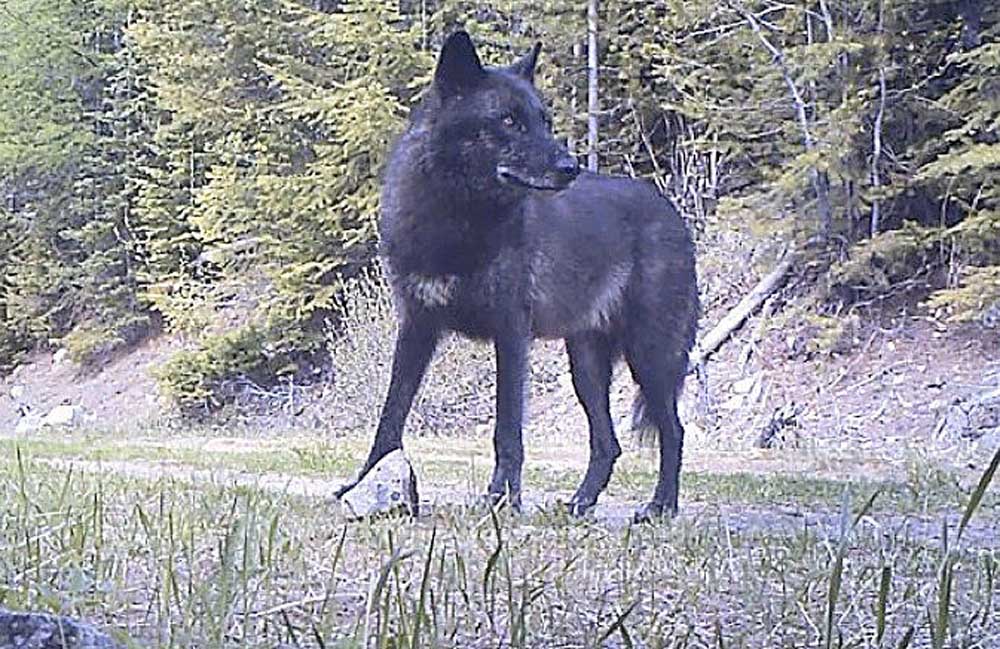Online Auction – Corbett Estate Auction
Corbett Estate Auction Date(s) 4/14/2025 - 4/30/2025 Bidding Opens April 14th at 5pm (pst) Bidding Starts to Close April 30th at 5pm (pst) OFFSITE AUCTION - All items located in […]
Published 9:45 am Wednesday, May 13, 2020

Wolf advocates are petitioning the Washington Fish and Wildlife Commission to limit shooting wolves on public, to require more from ranchers to protect grazing livestock and to put them under greater scrutiny.
Center for Biological Diversity attorney Sophia Ressler called Fish and Wildlife’s current approach to wolf-livestock conflicts “trigger-happy.” Non-binding guidance developed by an 18-member Wolf Advisory Group leans too heavily toward lethal removal, she said.
“The current protocol gives complete discretion to the department to act as they see fit,” Ressler said.
“We truly believe there is some serious dysfunction in wolf management that is not being dealt with,” she said. “We think that there needs to be another process.”
The Center for Biological Diversity, Cascadia Wildlands, Western Watersheds Project and Wild Earth Guardians are proposing that the commission write an ironclad rule laying out under what circumstances the department can shoot wolves.
If the commission rejects the petition, the groups can appeal to Gov. Jay Inslee.
None of the four groups are among the conservation groups represented on the Wolf Advisory Group, which developed the lethal-removal protocol in 2017.
Under the protocol, ranchers are required to use non-lethal means to deter wolves, but the department will consider culling a pack after three depredations in 30 days. The final decision rests with the department’s director, Kelly Susewind.
Fish and Wildlife wolf policy leader Donny Martorello said the protocol adds details to the state’s 2011 wolf recovery plan, which foresaw the department killing wolves to protect livestock as wolves recolonized Washington.
“The plan and protocol are guidance for us,” he said. “We’ve done a pretty job of staying within those documents. That part, I think, is working.”
The environmental groups contend the protocol has failed to protect wolves. They propose that ranchers in some cases move or electronically track cattle. Wolves couldn’t be shot on public grazing allotments where conflicts have become chronic.
“If the answer is to remove the cattle, I guess that’s the end of the story. We’re done,” Stevens County Cattlemen’s Association President Scott Nielsen said.
Ressler said a rule-writing process would allow the public to comment on the department’s policy, not just a select group of advisers.
Nielsen said he wouldn’t mind a rule that committed the department to shortening the time between the first depredation and lethal removal. A rule based on statewide comments is worrying, however, he said. “Obviously, not everyone in the state is affected like we are,” he said.
Here are some points the environmental groups have proposed be included in a lethal-removal rule:
• Only attacks that killed livestock would count toward the lethal-removal threshold. Currently, injured calves count toward the threshold. Investigators are more likely to find evidence on a chewed-up calf than a dead one whose remains have picked by scavengers.
• Livestock attacked within 1,000 yards of a known den or rendezvous site on public lands would not count toward the lethal-removal threshold.
• In places wolves have attacked livestock in consecutive years, ranchers would be required to track their livestock by GPS ear tags.
• In places where wolf packs have been culled in consecutive years, Fish and Wildlife would have to publicly disclose a plan to prevent more conflicts.
• No lethal action could be taken against wolves on public lands if packs had been culled on the same grazing allotments in two out of five years.
The Center for Biological Diversity and Cascadia Wildlands also are suing Fish and Wildlife in Thurston County in Western Washington. The groups claim the department’s lethal-removal protocol must undergo public and scientific review.
Fish and Wildlife argues shooting wolves falls under its mandate to control dangerous wildlife.